Atharv Sonwane
Gistify! Codebase-Level Understanding via Runtime Execution
Oct 30, 2025Abstract:As coding agents are increasingly deployed in large codebases, the need to automatically design challenging, codebase-level evaluation is central. We propose Gistify, a task where a coding LLM must create a single, minimal, self-contained file that can reproduce a specific functionality of a codebase. The coding LLM is given full access to a codebase along with a specific entrypoint (e.g., a python command), and the generated file must replicate the output of the same command ran under the full codebase, while containing only the essential components necessary to execute the provided command. Success on Gistify requires both structural understanding of the codebase, accurate modeling of its execution flow as well as the ability to produce potentially large code patches. Our findings show that current state-of-the-art models struggle to reliably solve Gistify tasks, especially ones with long executions traces.
MASAI: Modular Architecture for Software-engineering AI Agents
Jun 17, 2024Abstract:A common method to solve complex problems in software engineering, is to divide the problem into multiple sub-problems. Inspired by this, we propose a Modular Architecture for Software-engineering AI (MASAI) agents, where different LLM-powered sub-agents are instantiated with well-defined objectives and strategies tuned to achieve those objectives. Our modular architecture offers several advantages: (1) employing and tuning different problem-solving strategies across sub-agents, (2) enabling sub-agents to gather information from different sources scattered throughout a repository, and (3) avoiding unnecessarily long trajectories which inflate costs and add extraneous context. MASAI enabled us to achieve the highest performance (28.33% resolution rate) on the popular and highly challenging SWE-bench Lite dataset consisting of 300 GitHub issues from 11 Python repositories. We conduct a comprehensive evaluation of MASAI relative to other agentic methods and analyze the effects of our design decisions and their contribution to the success of MASAI.
Frustrated with Code Quality Issues? LLMs can Help!
Sep 22, 2023Abstract:As software projects progress, quality of code assumes paramount importance as it affects reliability, maintainability and security of software. For this reason, static analysis tools are used in developer workflows to flag code quality issues. However, developers need to spend extra efforts to revise their code to improve code quality based on the tool findings. In this work, we investigate the use of (instruction-following) large language models (LLMs) to assist developers in revising code to resolve code quality issues. We present a tool, CORE (short for COde REvisions), architected using a pair of LLMs organized as a duo comprised of a proposer and a ranker. Providers of static analysis tools recommend ways to mitigate the tool warnings and developers follow them to revise their code. The \emph{proposer LLM} of CORE takes the same set of recommendations and applies them to generate candidate code revisions. The candidates which pass the static quality checks are retained. However, the LLM may introduce subtle, unintended functionality changes which may go un-detected by the static analysis. The \emph{ranker LLM} evaluates the changes made by the proposer using a rubric that closely follows the acceptance criteria that a developer would enforce. CORE uses the scores assigned by the ranker LLM to rank the candidate revisions before presenting them to the developer. CORE could revise 59.2% Python files (across 52 quality checks) so that they pass scrutiny by both a tool and a human reviewer. The ranker LLM is able to reduce false positives by 25.8% in these cases. CORE produced revisions that passed the static analysis tool in 76.8% Java files (across 10 quality checks) comparable to 78.3% of a specialized program repair tool, with significantly much less engineering efforts.
Policy-Guided Lazy Search with Feedback for Task and Motion Planning
Oct 25, 2022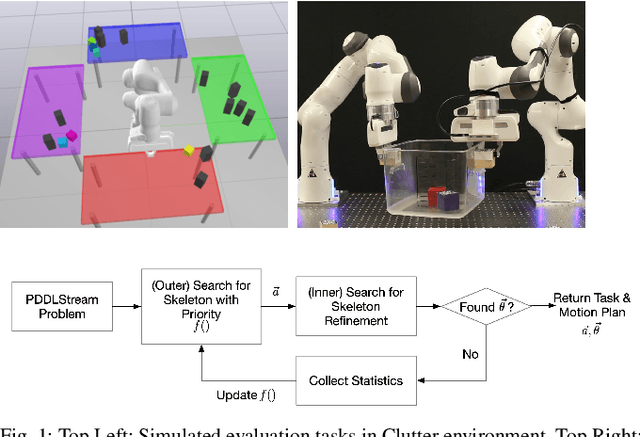
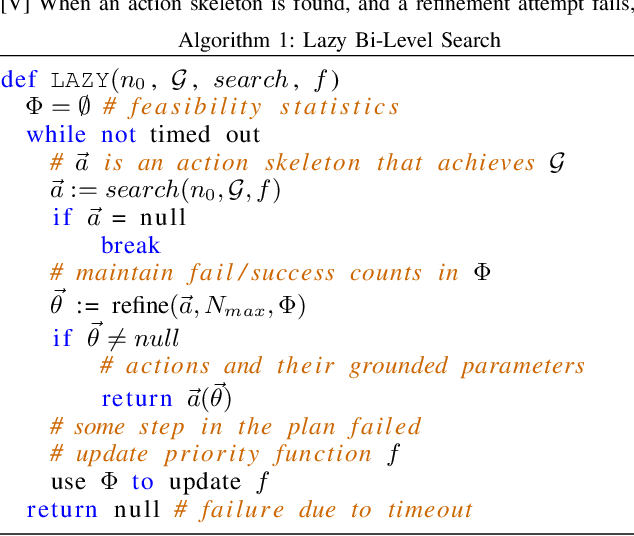
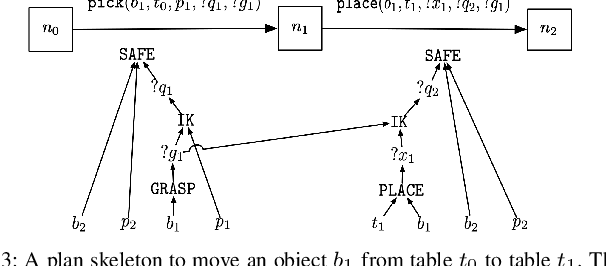
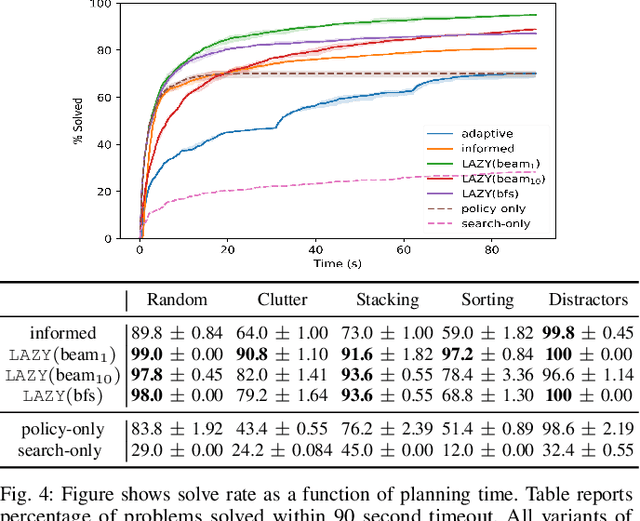
Abstract:PDDLStream solvers have recently emerged as viable solutions for Task and Motion Planning (TAMP) problems, extending PDDL to problems with continuous action spaces. Prior work has shown how PDDLStream problems can be reduced to a sequence of PDDL planning problems, which can then be solved using off-the-shelf planners. However, this approach can suffer from long runtimes. In this paper we propose LAZY, a solver for PDDLStream problems that maintains a single integrated search over action skeletons, which gets progressively more geometrically informed as samples of possible motions are lazily drawn during motion planning. We explore how learned models of goal-directed policies and current motion sampling data can be incorporated in LAZY to adaptively guide the task planner. We show that this leads to significant speed-ups in the search for a feasible solution evaluated over unseen test environments of varying numbers of objects, goals, and initial conditions. We evaluate our TAMP approach by comparing to existing solvers for PDDLStream problems on a range of simulated 7DoF rearrangement/manipulation problems.
Solving Visual Analogies Using Neural Algorithmic Reasoning
Nov 19, 2021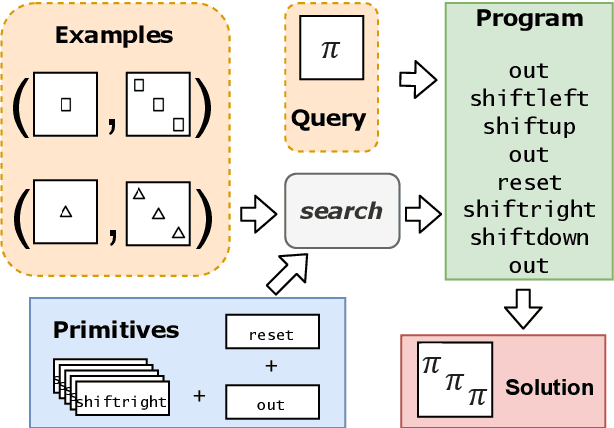

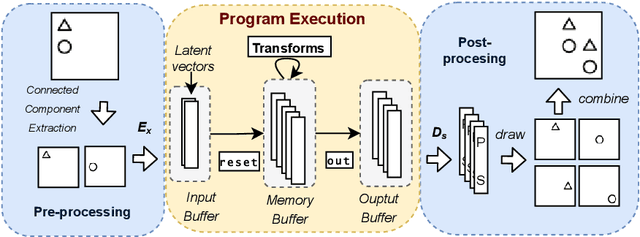
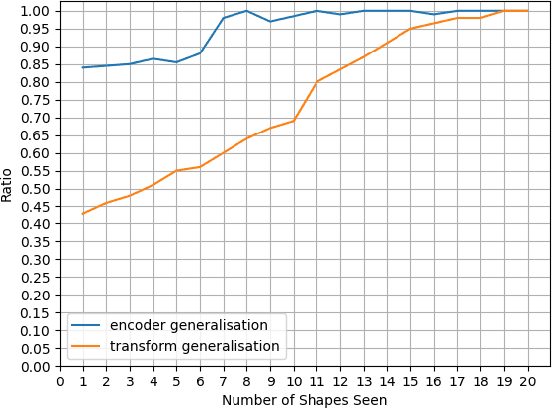
Abstract:We consider a class of visual analogical reasoning problems that involve discovering the sequence of transformations by which pairs of input/output images are related, so as to analogously transform future inputs. This program synthesis task can be easily solved via symbolic search. Using a variation of the `neural analogical reasoning' approach of (Velickovic and Blundell 2021), we instead search for a sequence of elementary neural network transformations that manipulate distributed representations derived from a symbolic space, to which input images are directly encoded. We evaluate the extent to which our `neural reasoning' approach generalizes for images with unseen shapes and positions.
Using Program Synthesis and Inductive Logic Programming to solve Bongard Problems
Oct 19, 2021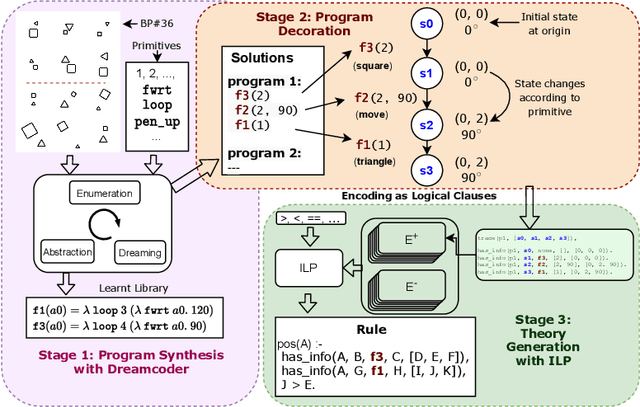

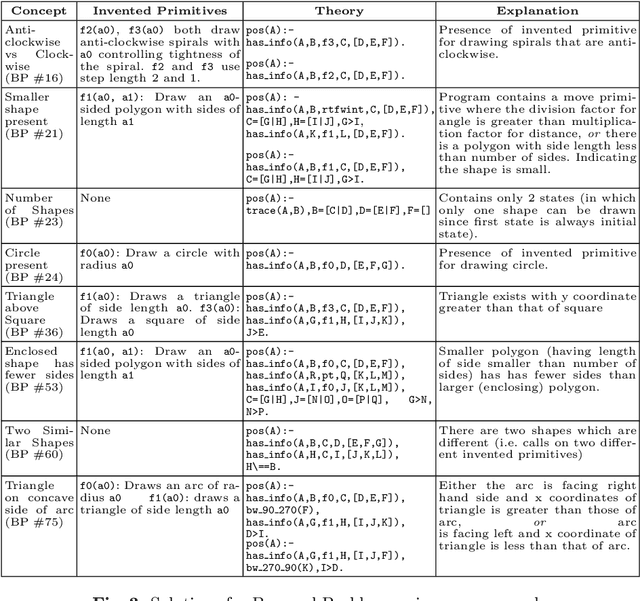
Abstract:The ability to recognise and make analogies is often used as a measure or test of human intelligence. The ability to solve Bongard problems is an example of such a test. It has also been postulated that the ability to rapidly construct novel abstractions is critical to being able to solve analogical problems. Given an image, the ability to construct a program that would generate that image is one form of abstraction, as exemplified in the Dreamcoder project. In this paper, we present a preliminary examination of whether programs constructed by Dreamcoder can be used for analogical reasoning to solve certain Bongard problems. We use Dreamcoder to discover programs that generate the images in a Bongard problem and represent each of these as a sequence of state transitions. We decorate the states using positional information in an automated manner and then encode the resulting sequence into logical facts in Prolog. We use inductive logic programming (ILP), to learn an (interpretable) theory for the abstract concept involved in an instance of a Bongard problem. Experiments on synthetically created Bongard problems for concepts such as 'above/below' and 'clockwise/counterclockwise' demonstrate that our end-to-end system can solve such problems. We study the importance and completeness of each component of our approach, highlighting its current limitations and pointing to directions for improvement in our formulation as well as in elements of any Dreamcoder-like program synthesis system used for such an approach.
 Add to Chrome
Add to Chrome Add to Firefox
Add to Firefox Add to Edge
Add to Edge